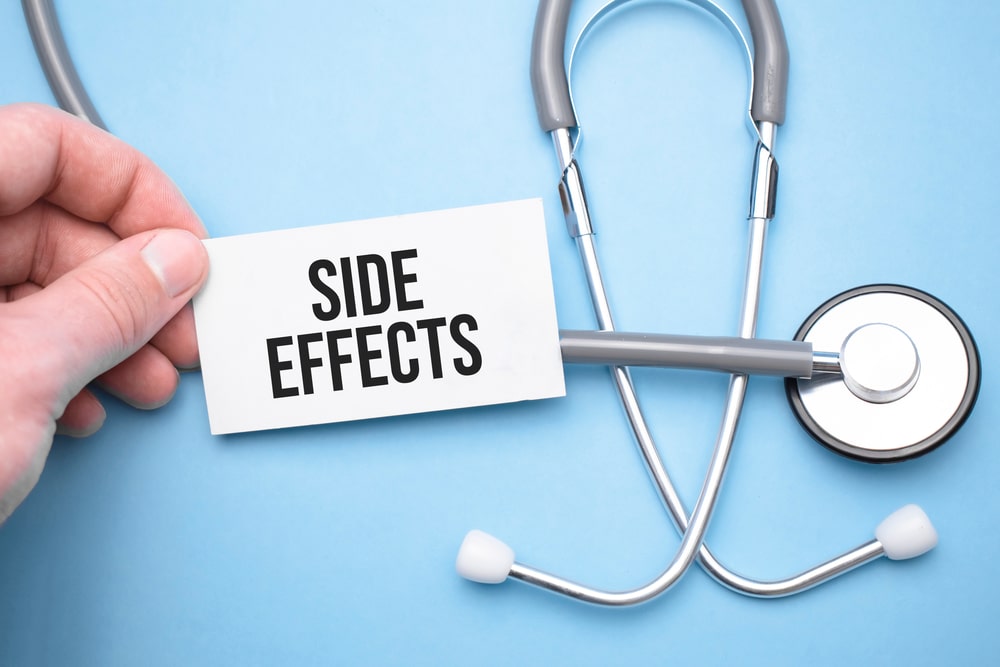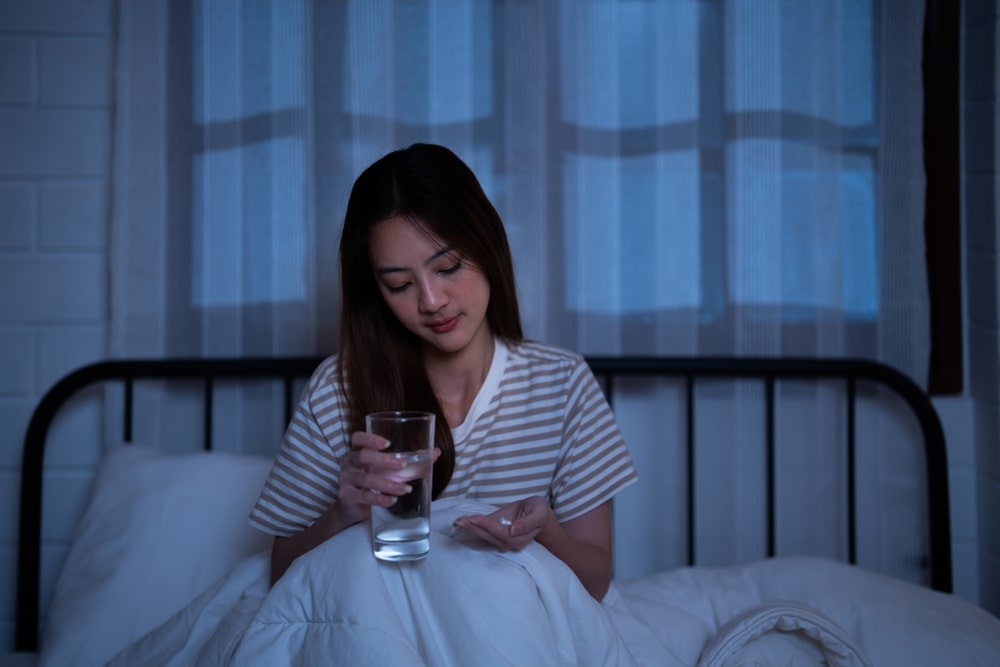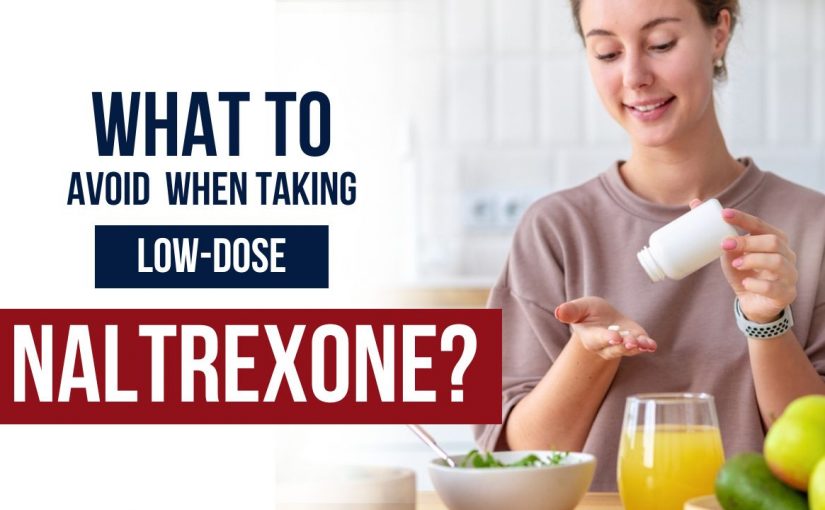What to Avoid When Taking Low Dose Naltrexone?
Every medicine comes with certain risks. If two medicines are taken together or a medicine is taken with herbal supplements, food, or beverages, there are possibilities of harmful interactions. Therefore, every patient must understand what medications they are provided and know how to use them. Before taking the medicine, the patient must be aware of the benefits and risks it can provide and what precautions and warnings it has.
If you are prescribed for standard dose of Naltrexone or considering the use of low-dose naltrexone, you need to be aware of what to avoid. This article focuses on “What to Avoid When Taking Low Dose Naltrexone”. Read on to know about everything you need to know about low-dose Naltrexone.
What is Naltrexone?
Naltrexone is a generic prescription medicine that got FDA approval in 1984 for use in medication-assisted treatment of opioid use disorder and alcohol use disorder. It is an antagonist for opioids that acts in blocking the opioid receptors (Delta kappa, mu, and opioid growth factor) and even modifying the hypothalamic-pituitary-adrenal axis interaction to subdue the amount of alcohol taken.
Naltrexone works in the brain to prevent the effects like euphoria and intoxication caused by illegal drug use and alcohol abuse. Moreover, it helps in reducing the urge or cravings for these substances and controls psychological dependence on them. It helps in avoiding relapses and lets drug addicts or alcohol abusers stay free of opioids or alcohol. The drug is available in the form of pills and even intramuscular injections. Its standard dose is 50-100 mg per day.
What to Avoid When Taking Low-Dose Naltrexone? Low-dose naltrexone (LDN) refers to taking 10% of the standard dose of naltrexone or up to one-tenth of naltrexone, i.e. approximately 4.5 mg of naltrexone per day. LDN is a non-toxic, safe, and reasonably priced drug that helps regulate the dysfunctional immune system. It is a pure inhibitor drug, a competitive opioid receptor antagonist, that can reduce pain and inflammation and treat a variety of conditions off-label like autoimmune diseases, cancers, mental health issues, chronic pain, and chronic fatigue syndrome. It is important to be careful about what to avoid when taking low-dose naltrexone.
Side Effects of Stopping Low-Dose Naltrexone:

Naltrexone is a standard dose that is associated with certain mild to serious side effects. However low-dose naltrexone is unlikely to cause the same side effects as of standard or high-dose Naltrexone. Low-dose Naltrexone is well-tolerated with minimal side effects, reported by less than 8% of people taking the drug.
Some of the potential side effects of taking low-dose naltrexone include:
- Nausea
- Insomnia (trouble sleeping)
- Nightmares or wild dreams at night
- Weight loss (rarely occurs)
- Priapism- prolonged erections (rarely experienced).
Clinical research has not investigated what side effects are possible among people taking low-dose naltrexone for the long term.
If you have been taking low-dose naltrexone and feel that you will be experiencing naltrexone withdrawal symptoms and side effects when you stop using the medicine, you are wrong. Naltrexone is not a controlled substance and stopping its use won’t cause any withdrawal side effects. However, it is important to talk to a healthcare provider about stopping your treatment course with Naltrexone so that you are well-educated on what will happen next.
Side effects with low-dose naltrexone are possible when you don’t take precautions, go as per the doctor’s instructions, and go through the warnings mentioned on the label. In case you experience anything that worries you about the use of low-dose naltrexone, consult your healthcare provider for medical advice.
Why Take Low-Dose Naltrexone at Night?

There is no specific timing of the dose mentioned by the manufacturer of the low-dose naltrexone drug. Many people prefer taking the medicine in the morning with a meal to avoid insomnia, a potential side effect. However, some go with taking the drug at night as it is reported to cause dizziness, drowsiness, and fatigue.
So, taking the drug in the morning may make it difficult for people to perform certain activities throughout the day that require an active, alert mind and body. Pharmacists usually suggest taking low-dose naltrexone at nighttime before going to bed. For the past many years, nighttime use has been generally suggested as most endorphin production takes place at night. Still, some studies reveal the same effects of low-dose naltrexone at daytime as at night.
Still, confused as to what is the right time to take low-dose naltrexone? Well, it is recommended to take LDN at night or in the morning as per the potential side effects and what’s best fit with your daily schedule. Further to avoid any unwanted effects, scroll down to the next section, “What to Avoid When Taking Low Dose Naltrexone.”
What to Avoid When Taking Low-Dose Naltrexone?
As a low-dose naltrexone drug is an antagonist for opioids, it can precipitate serious opioid withdrawal reactions. Therefore, it is strictly advised to avoid taking low-dose naltrexone at the same time as taking any opioid/ narcotic pain-relieving drugs. If you have been taking a short-acting opioid, avoid the use of low-dose naltrexone for at least a week after your last dose of the opioid. If taking a long-acting opioid, avoid the use of low-dose naltrexone for a minimum of 10-14 days.
Low-dose naltrexone use is contraindicated in the following cases:
- Simultaneous use of opioid analgesics and alcohol
- Having opioids addiction
- Withdrawing from opioid use or having symptoms of opioid withdrawal
- Failure of naloxone challenge test or positive report of urine analysis for screening opioids
- Acute hepatitis (except stable and compensated cirrhosis)
- An allergy or known hypersensitivity to naltrexone or any other diluent/inactive ingredient of the medicine
- Had organ transplants and is on immunosuppressive medications
- Having the drug a minimum of one week before surgery. [3, 6]
Where to Get Low-Dose Naltrexone?
Low Dose Naltrexone is available at online pharmacies. If you want to get low-dose naltrexone at a discounted price, buy Low-Dose Naltrexone online from Offshore Cheap Meds, a trusted online pharmacy.
FAQs
How Long Until Naltrexone Is Out of Your System?
An average elimination half-life of Naltrexone is between 4 and 13 hours. If an intramuscular shot is provided, Naltrexone stays in the system for longer. Certain factors like old age, chronic illness, body mass, hydration level, and slower body metabolism can influence the time taken for the medicine to be completely flushed out of your system.
Does Low Dose Naltrexone Cause Weight Loss?
Low Dose Naltrexone may help reduce food cravings and curb hunger, thereby aiding with weight loss. Contrave is a long-acting drug containing Naltrexone and bupropion which is FDA-approved for weight loss in overweight/obese people who have type 2 diabetes and/or hypertension. It has 8% naltrexone which is much less than the dose used for opioid withdrawal and more than the amount present in low-dose naltrexone.
Can You Take Naltrexone While Pregnant?
It is not known what impact Naltrexone can have on unborn babies and pregnant women. Therefore, if you are planning to take Naltrexone during pregnancy, take it only if the medicine’s benefits outweigh its side effects.
Does Low Dose Naltrexone Help with Anxiety?
Yes, low-dose naltrexone has the potential to reduce anxiety symptoms. As per researchers, it helps in blocking endorphins- the chemical released by the body to cope with stress and pain. It may help enhance mood, boost energy levels, and reduce pain and inflammation.
Does Low Dose Naltrexone Cause Liver Damage?
It is recommended to avoid the use of Naltrexone if you have any liver problems like acute hepatitis. In such cases, liver damage is a possibility. What to Avoid When Taking Low Dose Naltrexone is well explained in this article. For more details, you can get in touch with a healthcare expert.

